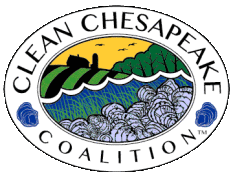
Government officials and environmental activists have long known about the important role dams inadvertently play in lessening the impact of runoff.
For more than 80 years, the Conowingo Hydroelectric Dam and reservoir system have functioned as the most significant stormwater management practice in the entire Chesapeake Bay watershed – trapping enormous amounts of nutrients and sediment.
What has long been understood and predicted about the harmful impacts of the nutrient and sediment rich water flows from the Susquehanna River on the health of the Bay and Bay water quality restoration efforts was confirmed in an August 2012 report by the U.S. Geological Survey.
With growing frequency, storm events send a torrent of nutrient and sediment laden flow through the dam into the Bay that undermines our water quality improvement efforts and expenditures below the dam. EPA’s Bay TMDL allocation is flawed because it neglects to appropriately account for the loss of trapping capacity in the Conowingo reservoir; instead adopting a “business as usual” scenario (see Bay TMDL Appendix T).
Meanwhile, during storm events and with greater frequency, accumulated nutrient and sediments that previously were trapped in the Conowingo reservoir are scoured and flushed into the Bay, delivering “shock loadings” of those pollutants.

The following studies and articles discuss the serious environmental impacts to the Bay attributable to the Conowingo Dam and reservoir system, such as sediment scour and concentrated nutrient runoff.
As the Susquehanna River Basin Commission (SRBC) has been monitoring the sediment storage capacity issue since 1985, a chronology of their involvement is included.
List of Studies
A Simulation-Based Approach for Evaluating Cost and Performance of a Sediment Removal and Processing System for the Lower Susquehanna River Dams
Industrial and Systems Engineering Review, 3(2), 2015
ISSN (ONLINE): 2329-0188
Authors: Saqib Qureshi, Raymond Fontaine, Samuel Saleeb, and Joel Stein
George Mason University, Department of Systems Engineering & Operations Research (SEOR)
A Better Way to Restore the Chesapeake Bay
The Maryland Public Policy Institute, 27 October 2014
Trapping Capacity of Dams and Other Impoundments
Chesapeake Bay Program, TMDL Midpoint Assessment WQGIT Meeting, 8 October 2014
Broad-Scale Association between Seagrass Cover and Juvenile Blue Crab Density in Chesapeake Bay
Virginia Institute of Marine Science (VIMS), 15 August 2013
Generation of an Estuarine Sediment Plume by a Tropical Storm
Journal of Geophysical Research: Oceans, Vol. 118, 20 February 2013
Peng Cheng, Ming Li & Yun Li
Changes in Sediment and Nutrient Storage in the Three Reservoirs in the Lower Susquehanna River Basin and Implications for the Chesapeake Bay: USGS Fact Sheet 003-98
U.S. Geological Survey, U.S. Department of Interior, 5 February 2013
Flux of Nitrogen, Phosphorus, and Suspended Sediment from the Susquehanna River Basin to the Bay during TS Lee, Sep. 2011, as an Indicator of the Effects of Reservoir Sedimentation on Water Quality
Scientific Investigations Report 2012-5185, U.S. Geological Survey, U.S. Department of the Interior, 2012
Robert M. Hirsch
Responding to Major Storm Impacts – Ecological Impacts of Hurricane Sandy on Chesapeake Bay & Delmarva Coastal Bays
National Fish & Wildlife Foundation, Maryland DNR, Integraion & Application Network, University of MD Center for Environmnetal Science (IAN/UMCES), 2012
Dennison, W.C., T. Saxby, B.M. Walsh (eds.)
Bathymetry and Sediment-Storage Capacity Change in Three Reservoirs on the Lowers Susquehanna River, 1996-2008: USGS Report 2009-5110
U.S. Geological Survey, U.S. Department of Interior, 2009
Michael J. Langland
The Impact of Sediment on the Chesapeake Bay and its Watershed: USGS Report 6-2005
U.S. Geological Survey, U.S. Department of Interior, 3 June 2005
The Impact of Susquehanna Sediments on the Chesapeake BayThe Impact of Susquehanna Sediments on the Chesapeake Bay
Chesapeake Bay Program, Scientific and Technical Advisory Committee Worshop Report, May 2000
Changes in Bottom-Surface Elevations in the Reservoirs on the Lower Susquehanna River, Pennsylvania and Maryland, Following the January 1996 Flood – Implications for Nutrient and Sediment Loads to the Bay: USGS Report 97-4138
U.S. Geological Survey, U.S. Department of Interior, 1997
Michael J. Langland and Robert A. Hainly
USGS “Lower Susquehanna River Reservoir System” presentation on the remaining capacity of the reservoirs in the Lower Susquehanna River and the significance of the consequences facing the Bay as a result of the diminished capacity.

